READY TO GET STARTED?
REQUEST A FREE ESTIMATE
Fill out the form below or call (888) 466-7849 for a free, no-obligation estimate.
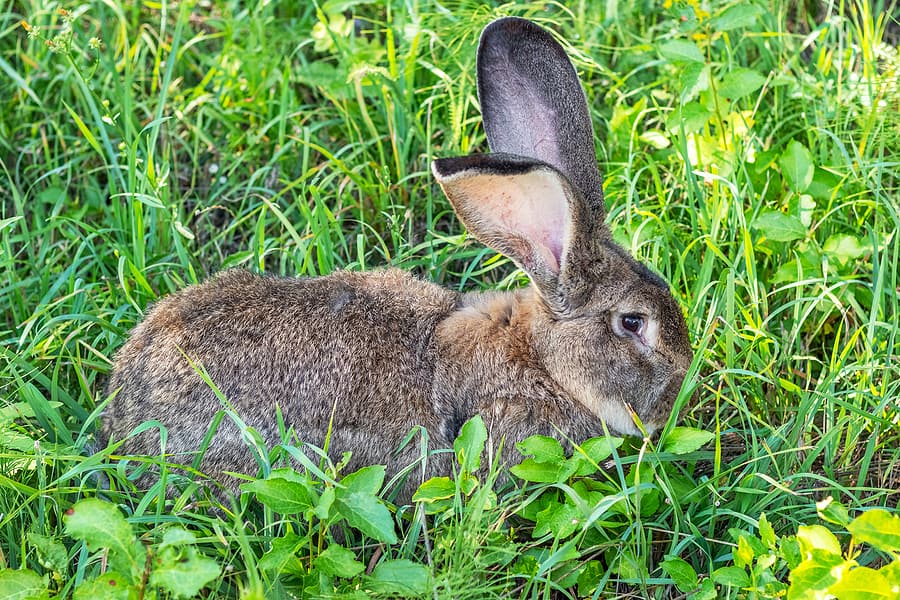
While some may have an idyllic picture of wildlife on their property (deer roaming across their yards, cute bunnies hopping through the garden), these nuisance wildlife can decimate your lawn or garden overnight. Squirrels digging holes, deer eating shrubs, and rabbits chowing down on your vegetables can leave you with a mess to deal with. If you don’t want to have to share your outdoor living space with these pests, consider these simple wildlife exclusion tips to prevent wildlife from taking over your yard.
The first step in wildlife control is identifying which critter you have.
Wildlife are less likely to hang out in your yard if they don’t have a place to hide. Getting rid of wood piles, brush, and overgrown shrubbery will eliminate the majority of their hiding spots. Open spaces and neatly trimmed flower beds help to discourage them, especially rabbits and groundhogs.
Another thing wildlife look for in your yard is a food source. Getting rid of their food or discouraging them from it will go a long way in keeping them out. Fill your garden with plants that deer and rabbits dislike. Pick any edible fruits and vegetables as soon as they are ripe. Collect fallen fruit and nuts before the squirrels can get to them. Don’t leave pet food sitting out overnight. Strap or bungee trash can lids onto your cans.
There are several plants you can include in your landscaping that help deter wildlife. Most animals will be repelled by the smell of garlic plants. Daffodils are a pretty addition to your garden but most animals dislike the bitter taste of their leaves. Lavender is great for repelling deer and rabbits. Marigolds work well at repelling moles. You can also use distasteful substances to spray or sprinkle around your garden or individual plants to help repel wildlife. Some substances that are effective include hot pepper extract, predator urine, castor oil, garlic clippings, cayenne pepper, putrid egg whites, and coffee grounds.
Putting deterrents in your yard can help scare these pests away. Dogs who have free run in your yard are great at keeping these wildlife away. You can also use noisemakers, motion-activated sprinklers and lights, automated sprinklers, garden spinners, decoy animals, and pinwheels to help scare them away.
You can also keep wildlife at bay by making it physically impossible (or at least much more difficult) for them to get into your yard or garden. You can put up a barrier to protect your yard or even individual plants you want to protect. Netting or chicken wire around plants or a wire cloche over plants can protect them from rabbits, groundhogs, squirrels, and deer. Putting electric fencing around your vegetable gardens can exclude most wildlife as long as they can’t go over or under it. To keep deer out, fences should either be extremely high (8 feet or taller) or short, doubled, and wide (such as 2 shorter fences spaced 5 feet apart). Use sturdy wire or hardware cloth to close any openings under your shed and deck to help keep out rabbits and groundhogs, Make sure to bend the wire into an L-shape and bury it several inches under the ground to keep them from digging underneath it.
If you have a problem with wildlife, contact your local wildlife control company who can help you identify which type of pest you are dealing with and provide you with the best wildlife exclusion methods for your situation.
How Common is the American Cockroach?
5 Winter Lawn Care Tips for Southern Homes
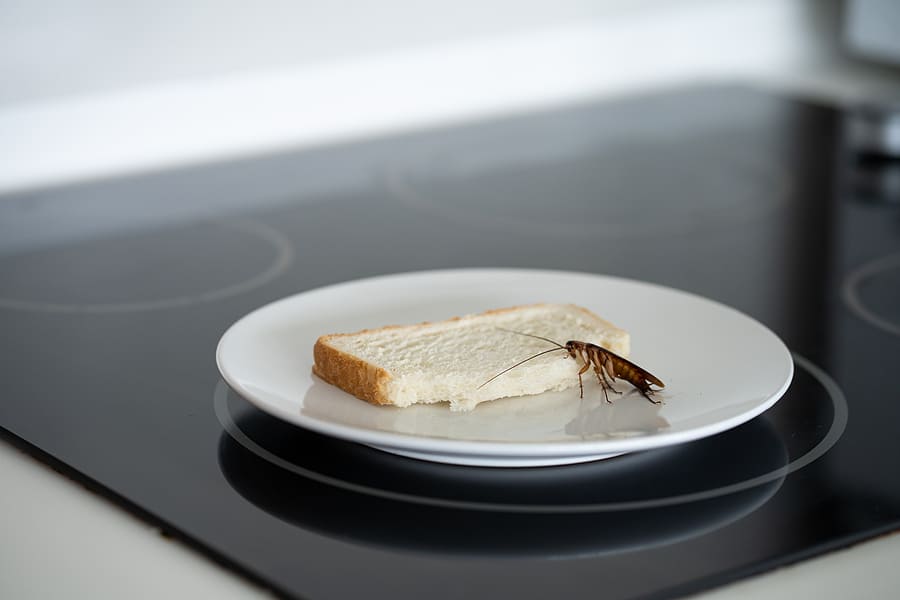
The last thing any homeowner wants to deal with is an unwanted household pest. Roaches, bed bugs, termites, rodents, and more each bring their own set of problems and damage to both homes and health. Our first instinct is to get rid of these pests quickly and we often go for a DIY route. But what should you know before you dive into DIY pest control?
DIY vs professional pest control is a common debate. One of the most important factors that goes into pest control decisions is cost. Although DIY products typically cost much less then commercial products, they can ultimately cost more in the long run. Most DIY pest control methods are reactive – they aren’t applied until a pest problem is already established. Professional pest control provides preventative treatments to help stop infestations before they start. Even though you may save money on the products, you may end up spending significantly more in treatment and repair costs down the road.
Other factors that go into pest control decisions include effectiveness, expertise, safety, and guarantee. DIY products typically work as “spot treatments,” encompassing a small area where the problem is. They don’t usually cover a large area nor last long enough to control a full blown infestation. Professional products are designed for large scale use, getting into places you may not see pests such as inside walls, crawlspaces, and foundations. Proper identification of the pest you are treating for is critical to elimination. While pest control products are labeled with easy-to-follow instructions, professional pest control technicians are equipped with the most up-to-date technology and techniques to help eliminate a pest infestation. The same is true for safety. DIY products can contain chemicals which are hazardous for humans and/or pets. They may also contain chemicals that the average homeowner isn’t familiar with. Professionals are trained on proper use of these chemicals, reducing the risk to you and your family. They also have green pest control options that can be utilized. Finally, DIY products may contain a manufacturer’s warranty or store guarantee on the product. Professional pest control companies will usually provide a service guarantee where they return between visits (usually at no additional charge) for any pest problems that pop up before service is due again.
If you have evaluated all the angles and decided the DIY approach is best for your situation, here are a few of our favorite DIY pest control tips you can use in your home.

The last thing any homeowner wants to deal with is pests. A household pest is any insect or animal that is commonly found in a household structure that can cause destruction to the property or to your health. While the occasional critter can make its way inside, routine occurrences indicates the likelihood of an infestation. Fortunately there are some DIY pest control tips you can use at home to help prevent these pests from taking over. Here are a few of the most common household pests and how to prevent them.

Most ants don’t cause any structural damage to your home (with the exception of carpenter ants). They are, however, the #1 nuisance pest in the United States. Ants are difficult to control because their colonies are so large. These pests typically come indoors in search of food and water and can usually be found near these sources in your home – especially in kitchens and bathrooms. Prevent ants by:

Birds are not usually considered nuisance pests but their nests can obstruct common areas of your home and their droppings can contaminate or damage other areas. Birds usually enter your home in search of food and shelter. Prevent birds by:

Cockroaches are dangerous to humans as they are known to carry serious diseases and trigger both allergies and asthma. These pests multiply quickly, making them very difficult to control. Roaches will come into homes in search of food, water, and shelter, with them often found in kitchens, bathrooms, and laundry rooms. Prevent roaches by:

Termites are known as silent destroyers, eating wood from the inside out and going undetected for long periods of time. Common signs of termites include swarms; mud tubes; discarded wings; discolored drywall; peeling paint; wood with a hollow sound when tapped; squeaky floorboards; doors and windows that stick; damaged wood; loose tiles; and buckling floors. Prevent termites by:
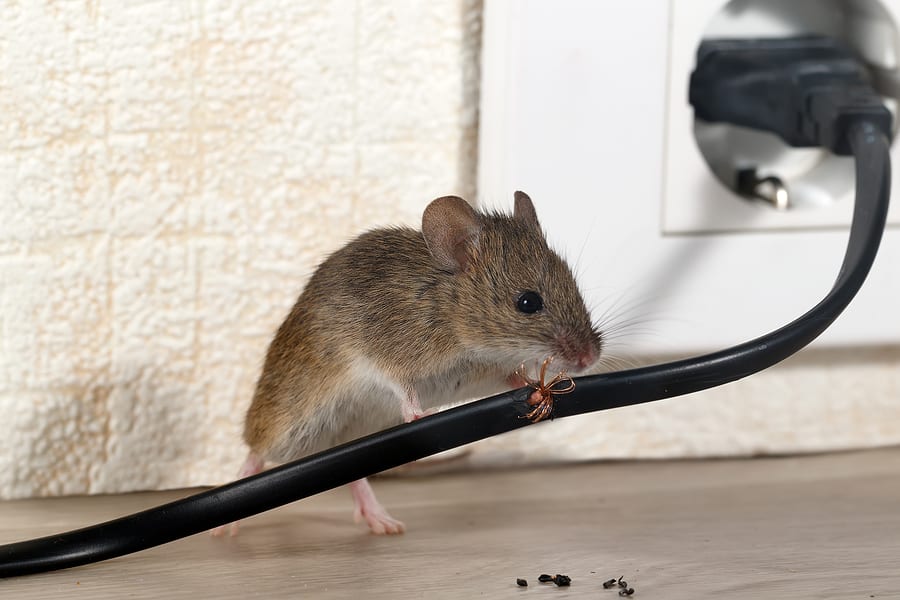
Rodents are common household pests and include rats, mice, squirrels, and raccoons. Rodents can cause significant damage to your property by chewing through electrical wires and insulation. They can also contaminate food and spread disease. Prevent rodents by:
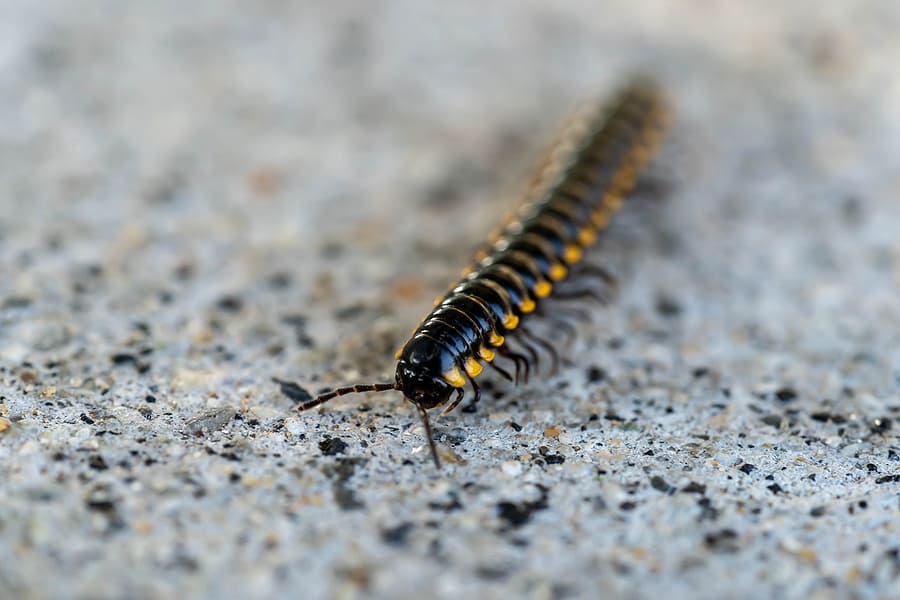
Centipedes are arthropods with 14 or more body segments and one pair of legs per segment. Millipedes are also arthropods but they have 2 pairs of legs on their body segments. Neither of these pests are considered dangerous and don’t cause damage or spread disease. They can, however, be annoying if they infest in large numbers. Both of these pests thrive in moisture-rich environments. Prevent centipedes and millipedes by:
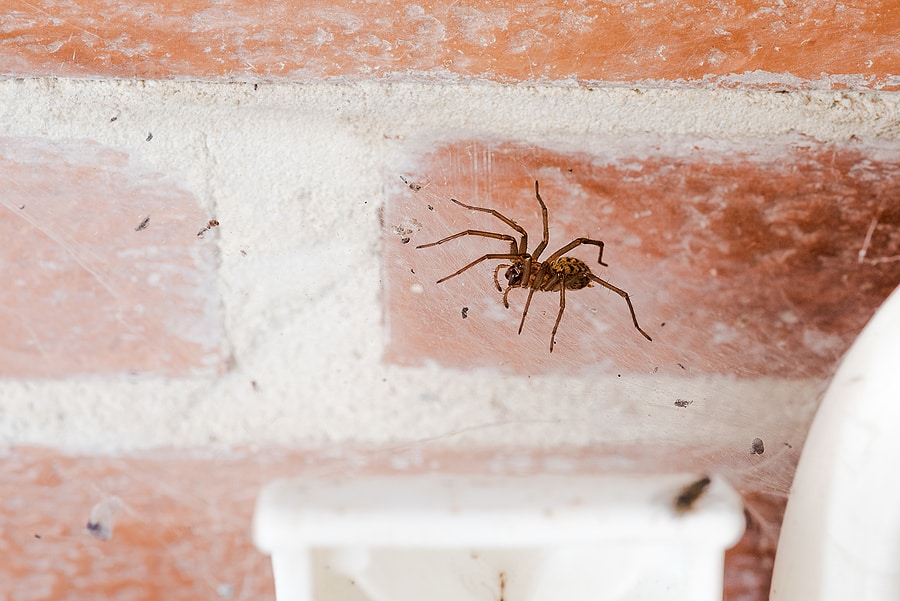
Although there are a few venomous spider species in our area, most spiders that make their way into your home are harmless (and even beneficial by eating other pests)! Prevent spiders by:
The key to household pest control is prevention. By taking these steps early, you can head off an infestation before it starts. If you have a problem with any household pests, contact your local pest control company for a free evaluation and comprehensive treatment plan.
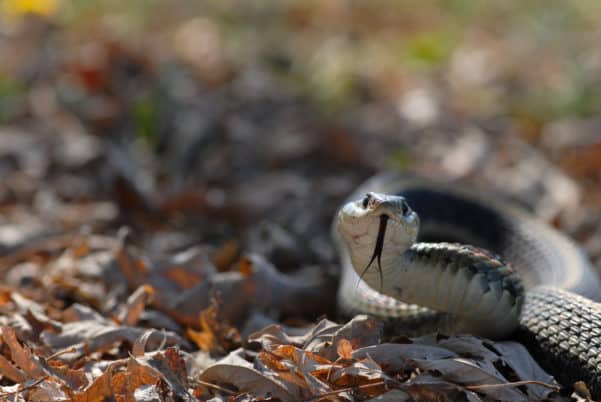
As the weather continues to warm up, snakes start to become more active and on the move in search of food. Most homeowners can agree that they fear finding snakes in the yard. But while most of us don’t want snakes hanging out on our property, it’s important to note that these wildlife creatures are beneficial to have around as they can get rid of other pests infesting your property. Instead of eliminating these creatures, every homeowner can take simple preventative measures to encourage them to find a different location to habitat.
Ensuring that your yard is well-kept up is one of the easiest and simple ways to deter snakes from your property. Debris and leaf piles are a huge attractant to rodents which will then attract snakes. The leaf piles are additionally a great place for snakes to hide out in. Make sure you are cleaning up any debris piles, including sticks, brush, and tree limbs from your yard.
Overgrown trees and shrubs provide cover and shelter for snakes. Make sure that you are trimming your overgrown trees and shrubs, so they are not touching the house or garage. Don’t forget to trim the branches off the ground so there is at least 24” to 36” space underneath. This helps eliminate a place for snakes to take cover, but also makes them easier to spot.
You might not be aware, but certain items are placed in your yard that could be attracting snakes. While many love to have decorative birdhouses and bird feeders in the yard, they can attract snakes. Some snakes are great climbers and will climb up to feast on the birds feeding on the feeders or living in the birdhouse. Consider placing the birdhouse or feeder on a metal pole or wood post, with the post wrapped in metal sheeting.
A perch pole is a great alternative to help keep snakes away from the property. Owls or hawks are natural predators to snakes and will use the installed perch pole. Make sure that the pole is in an open area in your yard, so the birds can have a good view of the entire area.
Though, sometimes it’s just best to install fencing to help keep snakes out. If you decide to install fencing, make sure that it’s buried a few inches into the ground and should be made up of ¼” or smaller rigid mesh. At the top of the fence, make sure that it bends to keep snakes from climbing over it.
If you’ve tried all the prevention tips you can to deter snakes away from your yard but it’s not working, it might be time to call your local wildlife control company. These professionals can help establish a regularly scheduled service and treatment plan to help with your snake problem.
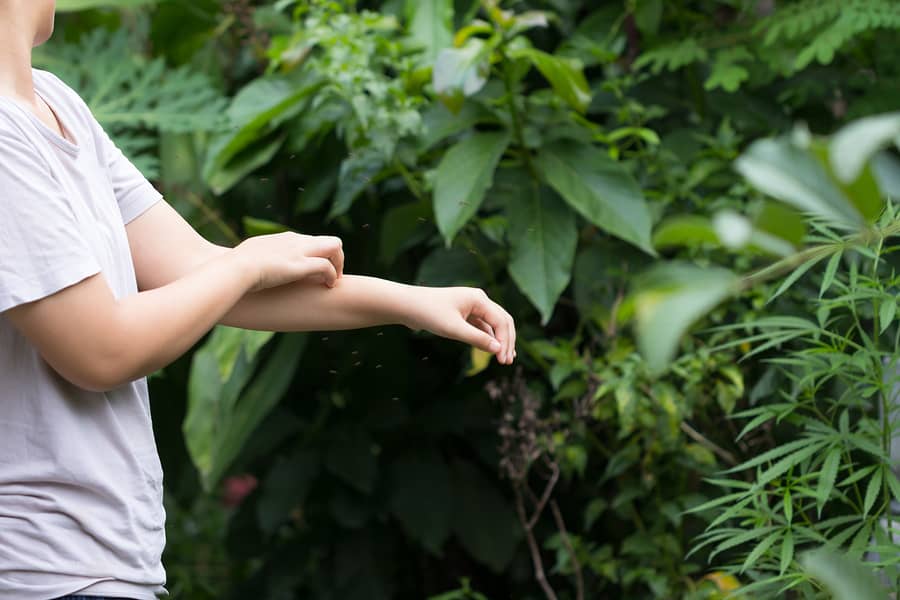
Humid, hot environments can be a major indication that mosquitoes are out and looking for a blood meal. Mosquito bites can be painful, creating an itchy, red welt on the skin. Depending on the person, mosquito bites could cause an allergic reaction too. While it’s inevitable to run into mosquitoes during these months, there are still ways to eliminate the chance of getting bitten.
When the weather is warm, humid, but perfect for being outside, it’s less likely that covering up is first thing you’ll think of doing. But, covering up is the most effective and easiest way to prevent mosquitoes from biting you. If you know you’ll be outside for some time, consider wearing long sleeves and pants as much as possible to cover your exposed skin. When preparing to spend time outdoors, consider wearing light-colored clothes. It’s known that mosquitoes are more attracted to darker colors, so wearing lightly colored clothing can help reduce the chance of being bitten.
If wearing long shirts and pants isn’t an option, another alternative is using insect repellant. Insect repellants are great to use when the weather is particularly hot and humid. It’s suggested that the best type of repellent to use is those that contain DEET. DEET has proven to be highly effective at repelling mosquitoes and other biting insects. It can help protect from mosquito-borne diseases such as Zika Virus, West Nile, and Encephalitis.
Whatever activities or plans you have while outside if the weather is hot, your body temperature will elevate. Staying cool and avoiding high body temperatures is impossible in the humid heat but it’s still important to try and keep cool as much as you can, since mosquitoes are highly attracted to elevated body temperatures. If you’ll be outside for a while in the heat, consider using portable fans, cold rags on your neck or forehead, and drink plenty of water throughout the day. Or consider planning your day around peak mosquito time which is in the late afternoon and evening.
It’s inevitable to run into mosquitoes in the spring and summertime and sometimes prevention isn’t enough. If you’ve gotten bitten one too many times, consider calling your local pest control company where they can provide you with an inspection and offer an effective mosquito treatment plan.
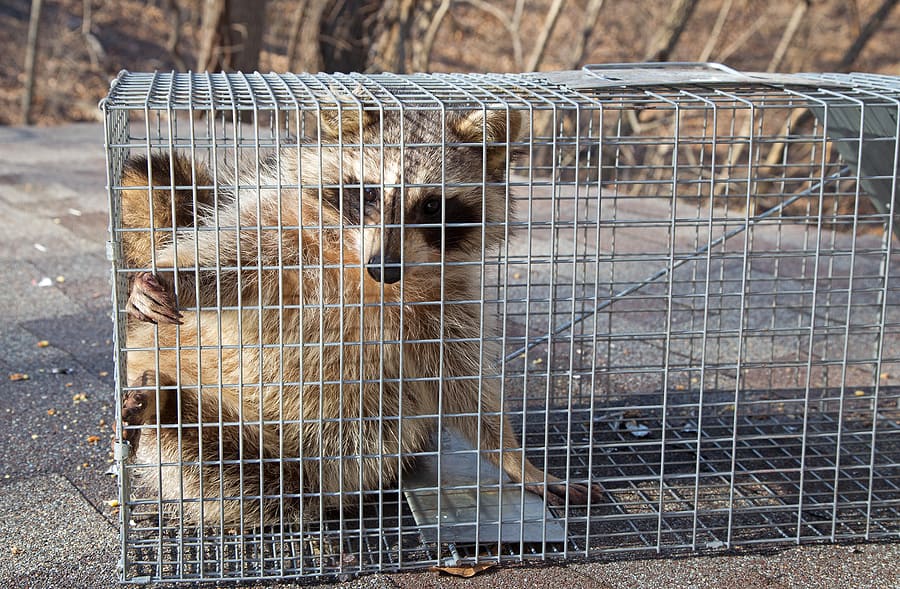
A nuisance pest (also referred to as nuisance wildlife) is any animal that interferes with other human activities or that is menacing or destructive; for example, animals that eat our birdseed, dig up gardens or landscaping, populate a place where they are unwanted (like your attic), damage buildings and public parks, or threaten human health and safety by spreading diseases, directly attacking us, or colliding with cars, planes, and trains. Some common nuisance animals include opossums, raccoons, moles and voles, bats, birds, deer, and skunks.
Studies have shown that deer vs car collisions cost Americans $1 billion per year. Birds vs airplanes also cost the same amount of damage annually. Squirrels, beavers, and other similar nuisance pests cause millions of dollars in damage to roadways, bridges, and dams each year. These creatures can also threaten already endangered species.
Wildlife in general search for 3 main things necessary for survival: food, water, and shelter. As human development spreads, interactions with wildlife will become more frequent. Competition for food, water and shelter will increase, making them more daring in their quest for survival. As they become accustomed to the proximity of humans, they will continue to adapt and increase their populations.
So what can you do to help prevent nuisance wildlife? The first step is to identify the pest you are dealing with. Federal and state laws protect most wildlife and regulate which species can be trapped, hunted, harvested, or harmed. In fact, all native birds are federally protected and some non-native species (including the house sparrow, European starling, and domestic pigeon which are all considered nuisance birds) have federal protection, as well. It is illegal to hunt, pursue, take, capture, kill or possess any migratory bird, nest, or egg.
Once you have identified the animal you are dealing with, the next step is to treat the problem, not the symptom. By removing the 3 things wildlife are searching for (food, water, and shelter), they will go elsewhere in their search. If a nuisance pest is eating your dog’s food, don’t just trap or relocate the offending animal. Store the dog food in a lidded container and take the bowls in overnight.
The University of Georgia Wildlife Extension recommends the following steps to prevent nuisance wildlife from taking over your yard.
One of the best ways to prevent wildlife is to make your yard or home undesirable to them. Once you identify the type of animal you are dealing with, do some research and learn their habits and preferences and modify your home or yard to make it more unattractive to them. Remove anything they can use for cover. Keep tall grass mowed short; remove piles of brush, logs, rocks, debris, firewood, trash, bricks, buckets, flower pots, old cars, used tires, and toys. Use an herbicide to get rid of weeds, briars, and vines. Cut away dead trees and limbs as these provide nesting and roosting spots for nuisance birds and bats.
Harassment is another prevention method you can use where you disturb or scare the wildlife away from your property. The effectiveness of harassment depends on the diligence of the homeowner. These methods must be utilized on a regular basis and moved frequently (every few days) otherwise the animals become accustomed to them and they are less effective. Tactile harassment methods include water spray and motion sensored sprinklers; light methods include bright lights, strobes, and lasers; and scare methods include eye balloons, scarecrows, silhouettes on windows, predatory figurines, and pyrotechnics.
Wildlife exclusion refers to utilizing physical barriers to keep wildlife out of your yard or home, usually through fencing or other materials. This is one of the best options for nuisance wildlife. All fencing should be staked or secured firmly to the ground. For large animals such as hogs, dogs, or deer, welded wire, chain link, or wood fencing is preferred. If you have a problem with deer, the fencing should be at least 8 feet tall. Smaller animals like opossums, raccoons, foxes, and squirrels do better with chicken wire, hardware cloth, or electric fence that is at least 2 feet tall and buried 6″ to 12″ into the ground.
Exclusion from your house is also possible. Cap chimneys to prevent raccoons, bats, birds, and squirrels. Keep soffit vents in good repair and screened to prevent insects, birds, and bats. Use hardware cloth or screens that still allow airflow to protect the gabled ends of homes or barns to keep out squirrels, bats, and birds. Keep windows and doors, including those to garages and sheds shut and make sure they have proper sealing and that screens and weather seals are in good repair to prevent snakes, bugs, mice, raccoons, and opossums. Cover dryer vents with a screen and clean them regularly to prevent snakes and mice. You can also seal around them with expanding foam or weather seal. Finally, prevent mice and bats from getting in around electric lines, phone lines, cables, and pipes by sealing them with expanding foam or weather seal.
Removal and relocation of nuisance wildlife is discouraged as it can oftentimes be illegal. You can remove these pests from your home and release them onto your own property but steps must be taken to seal off entry points back into the home to keep them from coming back in. It is illegal to relocate nuisance pests onto someone else’s property. This option is usually deferred to a professional wildlife company who is familiar with trapping and relocation laws in your area.
Repellents can also be utilized to keep out offensive animals. Research shows that most soundwave repellents are not very effective at keeping animals at bay. The most effective repellents are those that use taste, fear, and odor. Different species respond to different repellents so identification of your problem critter is essential. The success of repellents depends on timing, how many of those types of animals are present, how hungry they are, and if they have been conditioned prior to coming onto your property. In general, the most effective methods combine repellents with physical barriers.
Lethal control of nuisance wildlife requires permits from federal and/or state wildlife agencies. While these permits can be given to non-professionals, it is not recommended due to the risk of bites, rabies, and other diseases that can be spread by these animals.
If you have a problem with nuisance wildlife, contact a local pest control company that specializes in wildlife control so they can help properly identify the animal you are dealing with and provide the most up-to-date, safe, and legal exclusion methods for your situation.
Overwintering Pests: Boxelder Bugs and Ladybugs

There is a big debate in the pest control industry as to which is more effective – professional pest control or do it yourself pest control. There is a growing trend among homeowners who want to tackle pest control themselves both to save money and time. These DIY pest control methods employ both chemical and natural remedies. Regardless of which route you take, prevention is always key to controlling household pests. Here are 10 of our most effective DIY pest control tips:
This one is pretty self explanatory but a clean house is much less attractive and hospitable for pests. Wash dishes daily and clean any food scraps out of the sink. Drain dirty dish water after each use. Keep kitchen counters and surfaces wiped down daily. Store food and drinks in sealing plastic or glass containers. Make sweeping, mopping, and vacuuming part of your regular routine. Use garbage cans with locking lids and empty them regularly. Keep the grass mowed and get rid of weeds. Keep shrubs and trees trimmed back so they aren’t touching the house. Maintain your drainage systems and eliminate any standing water.
Pests come into your home in search of 3 things: food, water, and shelter. If you can eliminate these 3 attractants from your home, pests will have no reason to come in. Keep your home clean as referenced above. Repair any leaky pipes and faucets both inside and outside of the home. Don’t leave pet food and water bowls out overnight. Declutter your home and get rid of any old magazines, junk, etc. Try to use plastic storage bins instead of cardboard boxes.
Pests can’t get into your home unless they can find a way in. Some pests only need the tiniest of openings to penetrate your house. Inspect the outside of your home for any potential entry points and seal them up with caulk, steel wool, etc. Make sure to check foundations, door frames, windows, utility pipes, cables and wires, and the roof. Repair any broken windows and screens. Fill in any holes, gaps, or cracks in pipes and vents.
Your yard is the first line of defense when it comes to pests. They have to come into the yard before they come into the house. Keep your grass cut short and eliminate weeds. Get rid of any piles of leaves, debris, fallen branches, etc. Do the same for old automobiles, trashcans, and dumpsters. Elevate wood piles off the ground or store them in wood boxes with lids.
Keeping your home well ventilated and dry will go a long way towards keeping pests at bay. Most pests are attracted to moisture and basements, attics, and crawlspaces provide the ideal breeding ground for these. Use a dehumidifier to decrease moisture and consider crawlspace enclosure to not only help eliminate pests but also provide significant energy savings for your home.
Some pests like dust mites and bed bugs will seek shelter in your bedding, clothes, etc. Wash any clothing, sheets, blankets, quilts, and towels that you come into contact with regularly (at least 3 to 4 times per month). If you have pets, wash their bedding just as often to help eliminate and prevent fleas.
Some plants are known to be good insect repellents. These provide a green pest control alternative to traditional chemical methods. Plant any of these varieties around your home for a natural remedy to some common pests.
Knowledge is power so do some research and learn what the most common pests are in your area and what kind of damage or threat they cause. Pests vary by location and different treatments are required for each of them. Proper identification is key to proper treatment.
While some household pests are dangerous to your health (like rodents and roaches) or can cause significant damage to your home (such as termites), others are actually quite beneficial to have around, especially if you have a garden. Ladybugs eat aphids and are great for the garden. Green lacewings eat aphids and spider mites. Ground beetles eat slugs and caterpillars. Bats (as long as they are outdoors and not inside your home) eat and control the populations of mosquitoes and many other insect species. These beneficial pests are a great natural pesticide to use in place of chemical products.
Sometimes an infestation can be beyond the scope of DIY pest control methods. In these circumstances it is best to call a professional who can properly identify the pest you are dealing with and provide proper treatment, as well as ongoing prevention techniques you can use at home.
If you suspect you have a pest problem, contact your local pest control company for a thorough evaluation.
Stink Bugs: What Do They Actually Do?
Wildlife Control: Animals to Look Out For This Fall
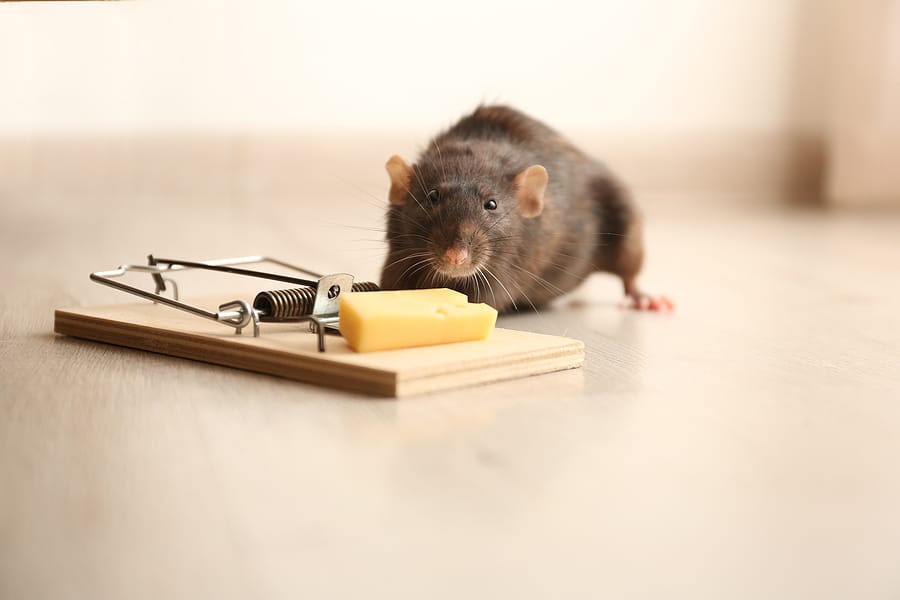
When it comes to household pests (like spiders, ants, roaches, and termites), there are several options for pest control to choose from. Should you use do it yourself pest control? Should you call a professional pest control company? What is the difference? What are the pros and cons of each? Here we break down the advantages and disadvantages of DIY vs professional pest control.
The key to effective pest control is proper identification. Appropriate treatment depends on the species of the pest, how far the infestation has spread, the size of the home, climate, and many other factors. DIY pest control products have labels with directions and warnings that are fairly simple to follow. Professionals, however, have the knowledge and training on industry trends and groundbreaking products that may not be readily available to household consumers. They know key indicators to look for and can provide quick assessments and effective treatments.
Cost is one of the biggest factors that influence DIY vs professional pest control treatments. While do it yourself products are typically less expensive than commercial products, they can end up costing you more in the long run. Most homeowners don’t treat a pest problem until they spot them; unfortunately by this point the infestation is usually already established. This could end up costing significantly more in treatment and damage repair costs than a professional service would. Professional pest control services can be more costly initially but save you over time through prevention.
DIY products are certainly convenient – you just head to your local hardware store and pick up what you need. Professional services have to be coordinated around their availability and your schedule, sometimes requiring you to be at home for the service.
Using chemicals of any kind can pose a hazard to yourself, your family, and your pets. DIY products can contain chemicals that the average consumer may not be familiar with. This can pose a threat to your and your family’s health. With a professional service the risk on the homeowner is taken away. Green pest control options are also available which are safe for both you and your pets.
The ultimate goal of any pest control treatment is effectiveness – you want it to work. With DIY methods, you usually only treat the areas where you see an active problem. These products are effective for small pest problems but typically aren’t strong enough or don’t last long enough for significant infestations. Pests are also highly adaptable and can become resistant to many chemicals used in these products. Professional pest control treatments use the most up to date methods and products. They can also treat areas where infestations have spread that you may not see such as inside walls, in attics, and crawlspaces.
DIY product guarantees will vary depending on the store or manufacturer. Most pest control companies will offer a service guarantee where they will come back and treat in between scheduled visits if a problem arises at no extra charge to the consumer.
As previously mentioned, most DIY products are designed to be used for an active problem. Oftentimes, these products aren’t used until after an infestation is already established. With a professional service, visits are set on a scheduled basis whether there is an active pest problem or not. This allows the technician to use preventative measures when infestations are gone to keep them from flourishing in your home.
When you have a pest problem, the main concern is getting it taken care of quickly and effectively whether that is through DIY methods or a professional service. Every situation is different and the main concern is the appropriate treatment for each individual situation. If you suspect you have a pest problem or would like a quote on services, contact a professional pest control company.
Why Rain and High Temperatures Bring Mosquitoes
What Are Those Little Red Bugs?
Wildlife: Leaving a Mess Behind
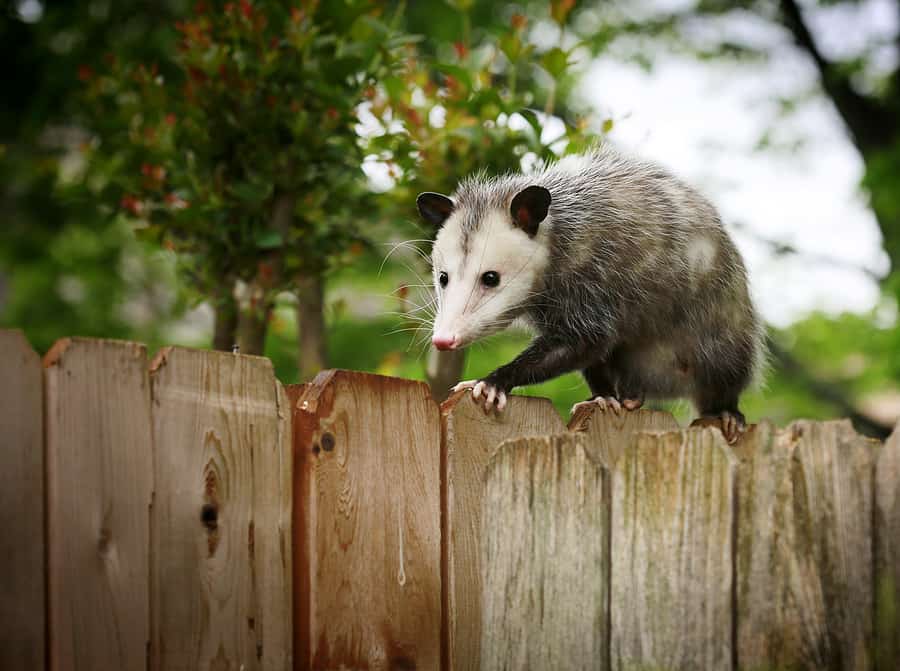
It’s minutes before you have to run out the door and make your commute to work. You make your coffee and look out the window, only to see last night’s dinner scattered throughout your yard! Unfortunately, your garbage has been rummaged through all night by a couple of wildlife pests. Two popular animals that are known to forage through trashcans and dumpsters for food are raccoons and opossums.
Raccoons, known for their distinctive black mask coloring on their faces, can range from just under 2 feet long to over 3 feet long. These animals are considered nocturnal and are rarely seen by humans. Be aware, though, spotting a raccoon during the day can be a possible sign they have rabies or other abnormal conditions.
Raccoons are scavengers, looking for food wherever they can find it, often foraging in trashcans and dumpsters. These skillful creatures can easily use their paws to open doors and lids to look for food. While they are omnivores, they prefer fruits and nuts over meat. Because they are creatures of habit, once these animals find a food source at your home, they will keep coming back until the food source is gone.
Another animal you’ll catch roaming around your trashcans is the opossum. Grey in color, opossums can range from 14” long to over 3 feet long, with their tails making up 50 percent of their total body length! These animals also tend to live near wet areas such as swamps and marshes.
While opossums are omnivores, they prefer insects and carrion over fruits and vegetables. As highly skilled climbers, you’ll find these creatures in trees, staying up there for as long as they can. They are also slow movers so don’t expect them to make a quick getaway! Opossums are generally not aggressive, though they will play dead if they are threatened.
Here are some tips to help prevent wildlife from rummaging through your garbage.